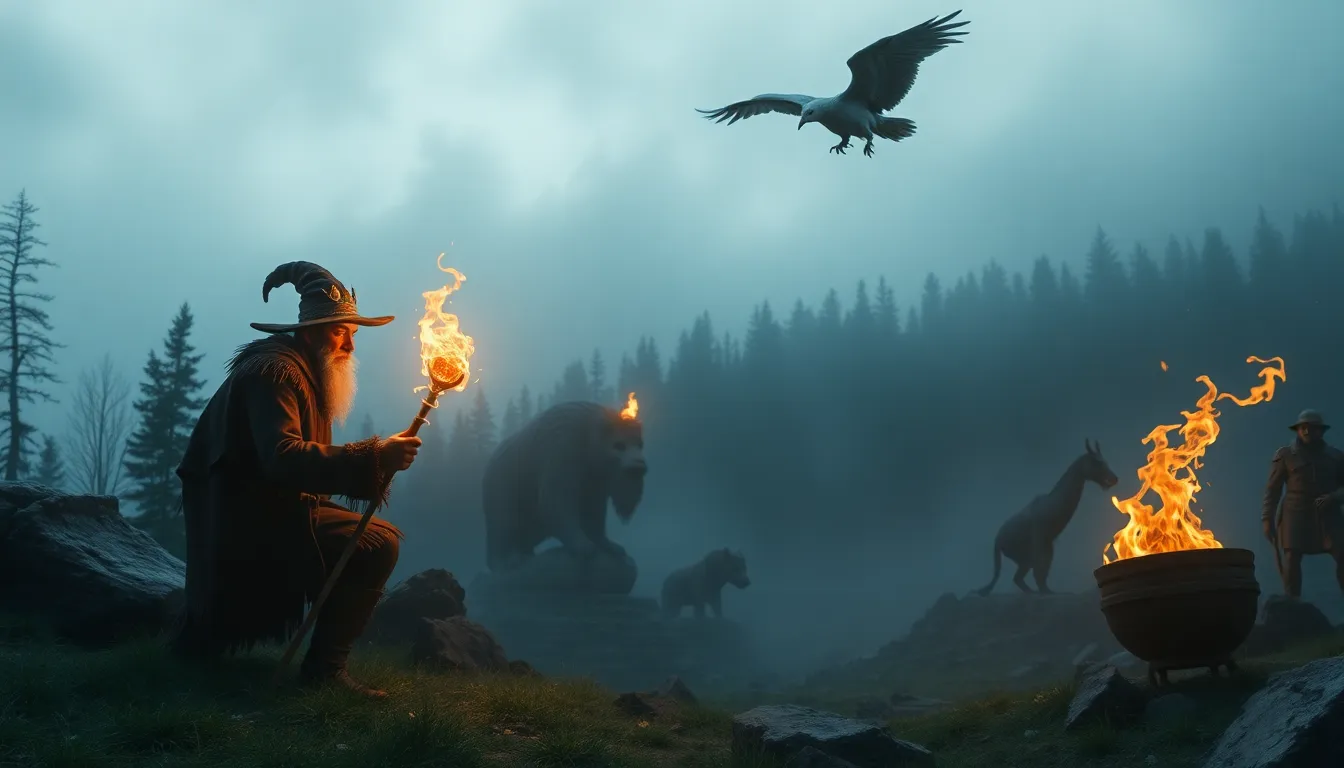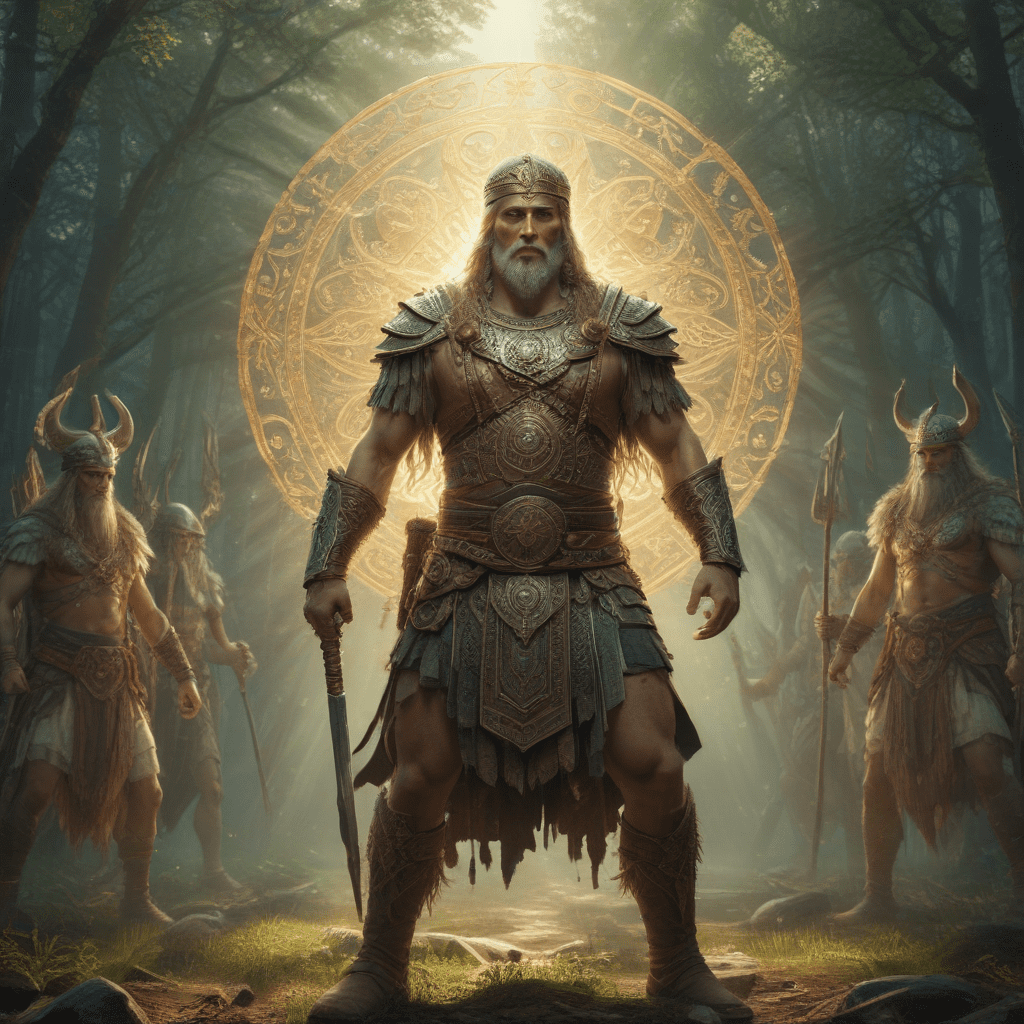The Role of Tricksters in Teaching Life Lessons
I. Introduction
Tricksters are captivating figures found in folklore and mythology across various cultures. They are often portrayed as cunning, mischievous, and sometimes morally ambiguous characters who challenge the status quo. Tricksters embody a complex duality, acting as both creators and destroyers, and their stories serve as vehicles for important life lessons.
This article explores the significance of trickster figures in conveying life lessons, examining their historical context, characteristics, and the moral implications embedded in their narratives.
II. Historical Context of Trickster Figures
The origins of trickster archetypes can be traced back to ancient mythologies, where they occupied a crucial role in storytelling. These figures often emerge during times of societal change, reflecting the shifting values and beliefs of their cultures.
- Anansi – A spider god from West African folklore, Anansi is known for his cleverness and ability to outsmart larger and stronger foes.
- Loki – In Norse mythology, Loki is a trickster god who brings chaos but also facilitates growth and transformation among the gods.
- Coyote – A key figure in various Native American tales, Coyote often symbolizes the unpredictable forces of nature and human behavior.
As cultures evolved, so too did the role of tricksters, adapting to new societal norms and continuing to resonate in modern storytelling.
III. Characteristics of Tricksters
Tricksters share several common traits and behaviors that define their role in narratives:
- Cunning and Intelligence: Tricksters often use their wits to outmaneuver others.
- Deception: They frequently employ tricks, disguises, and deception to achieve their goals.
- Humor: Their stories often contain comedic elements that highlight the absurdity of life.
Tricksters embody a duality, acting as both creators and destroyers. They disrupt norms and challenge authority, but their actions often lead to necessary change and growth. Humor and deception, central to their narratives, serve as tools for both entertainment and education.
IV. Tricksters as Agents of Change
Tricksters challenge societal norms and expectations, often instigating change through their actions. Their antics can lead to significant transformations:
- Challenging Authority: Tricksters frequently confront powerful figures, exposing flaws and hypocrisy.
- Impact on Communities: The chaos they create can provoke reflection and inspire collective action.
- Personal Growth: Characters interacting with tricksters often undergo personal transformations, learning valuable lessons in the process.
Through their disruptive nature, tricksters facilitate growth and innovation, proving that change can be both necessary and beneficial.
V. Moral Lessons Embedded in Trickster Tales
Trickster stories are rich with moral lessons that challenge traditional notions of right and wrong. These tales often present ambiguous morality, prompting audiences to think critically about ethical dilemmas:
- Consequences of Actions: Tricksters often face repercussions for their mischief, illustrating that every action has consequences.
- Value of Cleverness: Many stories highlight the importance of intelligence and quick thinking in overcoming adversity.
- Redemption: Tricksters may also seek redemption, reinforcing the idea that change is possible.
Case studies of specific trickster stories reveal how these narratives convey complex moral implications, encouraging audiences to reflect on their own values.
VI. Tricksters and the Concept of Resilience
Tricksters embody resilience and adaptability, showcasing how cleverness can be a powerful tool in overcoming life’s challenges:
- Overcoming Adversity: Tricksters often navigate difficult situations through wit and ingenuity.
- Lessons in Resilience: Their stories teach us that setbacks can be transformed into opportunities for growth.
- Real-World Applications: Emulating trickster traits can help individuals face personal challenges with creativity and confidence.
VII. The Psychological and Social Functions of Tricksters
Tricksters serve as reflections of human nature and societal flaws, often critiquing the world around them:
- Social Criticism: Through humor and satire, tricksters highlight societal injustices and provoke critical thought.
- Psychological Impact: Trickster tales resonate with audiences, prompting introspection and discussion about moral choices.
By confronting societal norms, tricksters encourage audiences to question and challenge their own beliefs.
VIII. Tricksters in Modern Media
Trickster characters continue to thrive in contemporary literature, film, and television, often embodying modern issues:
- Literature: Characters like the Joker in comic books represent the chaotic spirit of the trickster.
- Film: Movies like “Deadpool” showcase anti-hero tricksters who challenge conventions.
- Television: Series like “Rick and Morty” highlight the absurdity of life through trickster-like protagonists.
The evolution of trickster roles in popular culture underscores their enduring relevance and ability to resonate with contemporary audiences.
IX. The Educational Value of Trickster Tales
Incorporating trickster stories into educational settings can provide numerous benefits:
- Critical Thinking: Trickster narratives encourage students to analyze situations from multiple perspectives.
- Ethics and Morality: Discussing the moral ambiguity of trickster tales can foster ethical discussions.
- Practical Strategies: Educators can utilize storytelling, role-playing, and discussions to engage students with trickster themes.
X. Conclusion
Tricksters play a vital role in teaching life lessons, challenging societal norms, and promoting resilience. Their stories, enriched with moral ambiguity and humor, continue to resonate across cultures and generations. By examining the characteristics and impact of tricksters, we gain insights into human behavior, societal values, and the transformative power of storytelling.



